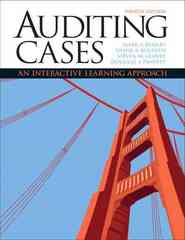Southeast Shoe Distributor (SSD) is a closely owned business that was founded ten years ago by Stewart
Question:
Southeast Shoe Distributor (SSD) is a closely owned business that was founded ten years ago by Stewart Green and Paul Williams. SSD is a distributor that purchases and sells men’s, women’s, and children’s shoes to retail shoe stores located in small to midsize communities. The company’s basic strategy is to obtain a broad selection of designer label and name brand merchandise at low prices and resell the merchandise to small one-location retail stores that have difficulty obtaining reasonable quantities of designer and name brand merchandise. The company is able to keep the cost of merchandise low by (1) selectively purchasing large blocks of production over-runs, over-orders, mid- and late-season deliveries and last season’s stock from manufacturers and other retailers at significant discounts, (2) sourcing in-season name brand and branded designer merchandise directly from factories in Brazil, Italy, and Spain, and (3) negotiating favorable prices with manufacturers by ordering merchandise during off-peak production periods and taking delivery at one central warehouse.
During the year the company purchased merchandise from over 50 domestic and international vendors, independent resellers, manufacturers and other retailers that frequently had excess inventory. Designer and name brand footwear sold by the company during the year include the following: Amalfi, Clarks, Dexter, Fila, Florsheim, Naturalizer, and Rockport. At the present time, SSD has one warehouse located in Atlanta, GA. Last year SSD had 123 retail shoe store customers and had net sales of $7,311,214. Sales are strongest in the second and fourth calendar year quarters with the first calendar year quarter substantially weaker than the rest.
BACKGROUND SSD is required to have an audit of its annual financial statements to fulfill requirements of loan agreements with financial institutions. This audit is to be completed in accordance with the AICPA professional standards for the audit of nonpublic companies. Your audit firm is currently planning for the Fiscal 2008 audit in accordance with these professional standards. SSD has the following general ledger accounts related to sales and cash collection activities:
■ Sales, ■ Uncollectible Accounts Expense, ■ Sales Discounts, ■ Accounts Receivable, ■ Sales Returns and Allowances, ■ Allowance for Uncollectible Accounts.
In accordance with the professional standards, Susan Mansfield, audit manager, reviewed SSD’s control environment, risk assessment process, and monitoring system and has assessed them as strong. Bill Zander, staff auditor, reviewed SSD’s information system and control activities related to sales and cash receipts and prepared the enclosed flowcharts (referenced in the top right hand corner as R 30-1, R 30-2, R 30-3, and R 30-4). The number and size of sales returns and allowances and write-offs of specific customer accounts is relatively small. Thus Susan has decided there is no need to document SSD’s policies nor perform tests of controls for these two business activities. As the audit senior, you have been assigned responsibility for (l) identifying internal control activities that assure that transactions, accounts and disclosures related to sales and cash collection activities are not materially misstated and (2) identifying tests of controls that would test the design and operating effectiveness of internal control activities identified for sales and cash collection activities.
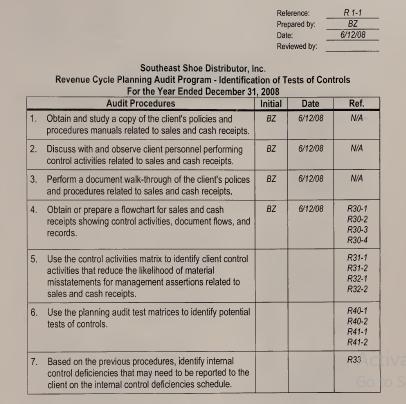
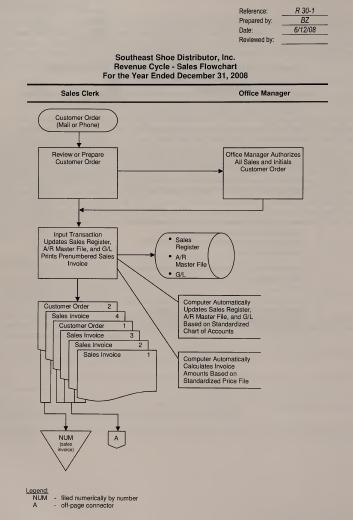
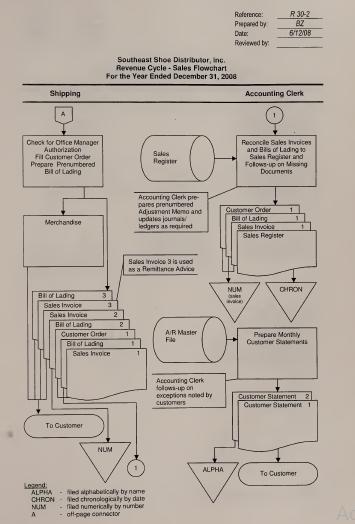
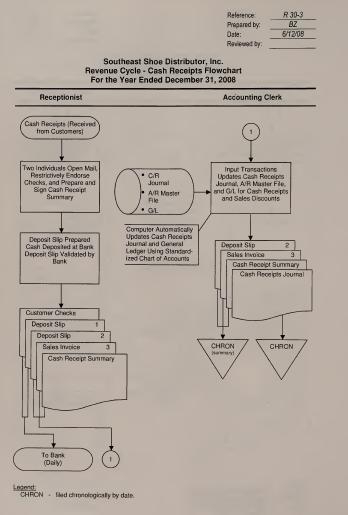
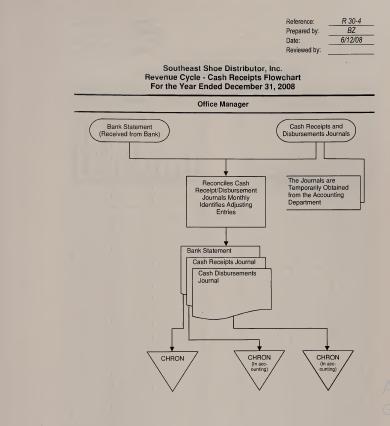
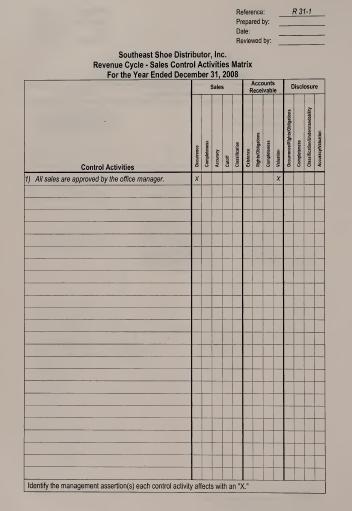

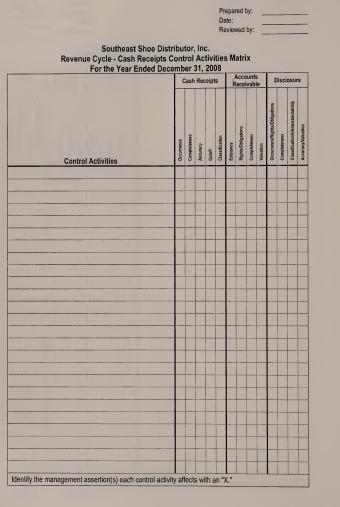
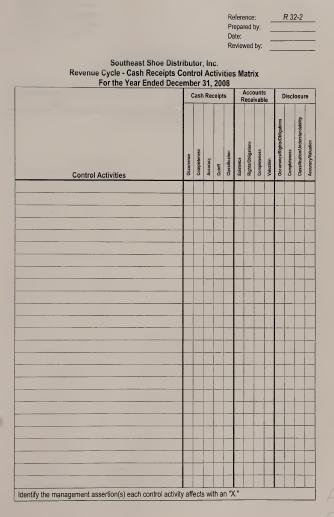
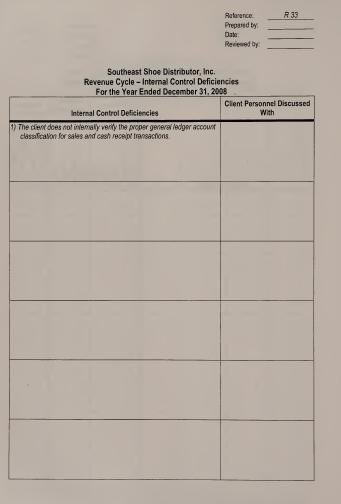
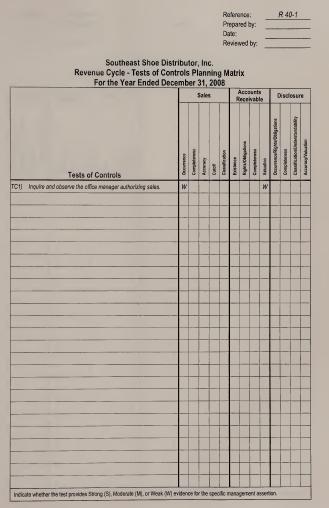
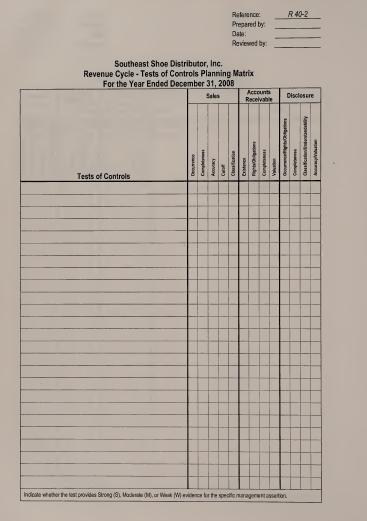


REQUIRED [1] Identify SSD’s control activities by completing step 5 of the audit program R 1-1.
Document your work in audit schedules R 1-1, R 31-1, R 31-2, R 32-1 and R 32-2 (Note: you should assume that only the control activities identified in the flowcharts exist).
[2] Identify potential tests of controls by completing step 6 of the audit program R 1-1. Document your work in audit schedules R 1-1, R 40-1, R 40-2, R 41-1 and R 41-2 (Note: number your tests similar to the example provided).
[3] Complete step 7 of the audit program R 1-1 by identifying any internal control deficiencies SSD may have and document your work in audit schedule R 1-1 and R 33.
[4] How would your work differ if SSD was a public company? What other factors would you need to consider?
[5] For each internal control deficiency you listed in audit schedule R 33 (requirement 3)
, identify at least one control activity that would remediate the deficiency.
[6] Describe the importance of SSD’s control activities given its large number of customers and vendors.
Step by Step Answer:

Auditing Cases An Interactive Learning Approach
ISBN: 978-0132423502
4th Edition
Authors: Steven M Glover, Douglas F Prawitt




